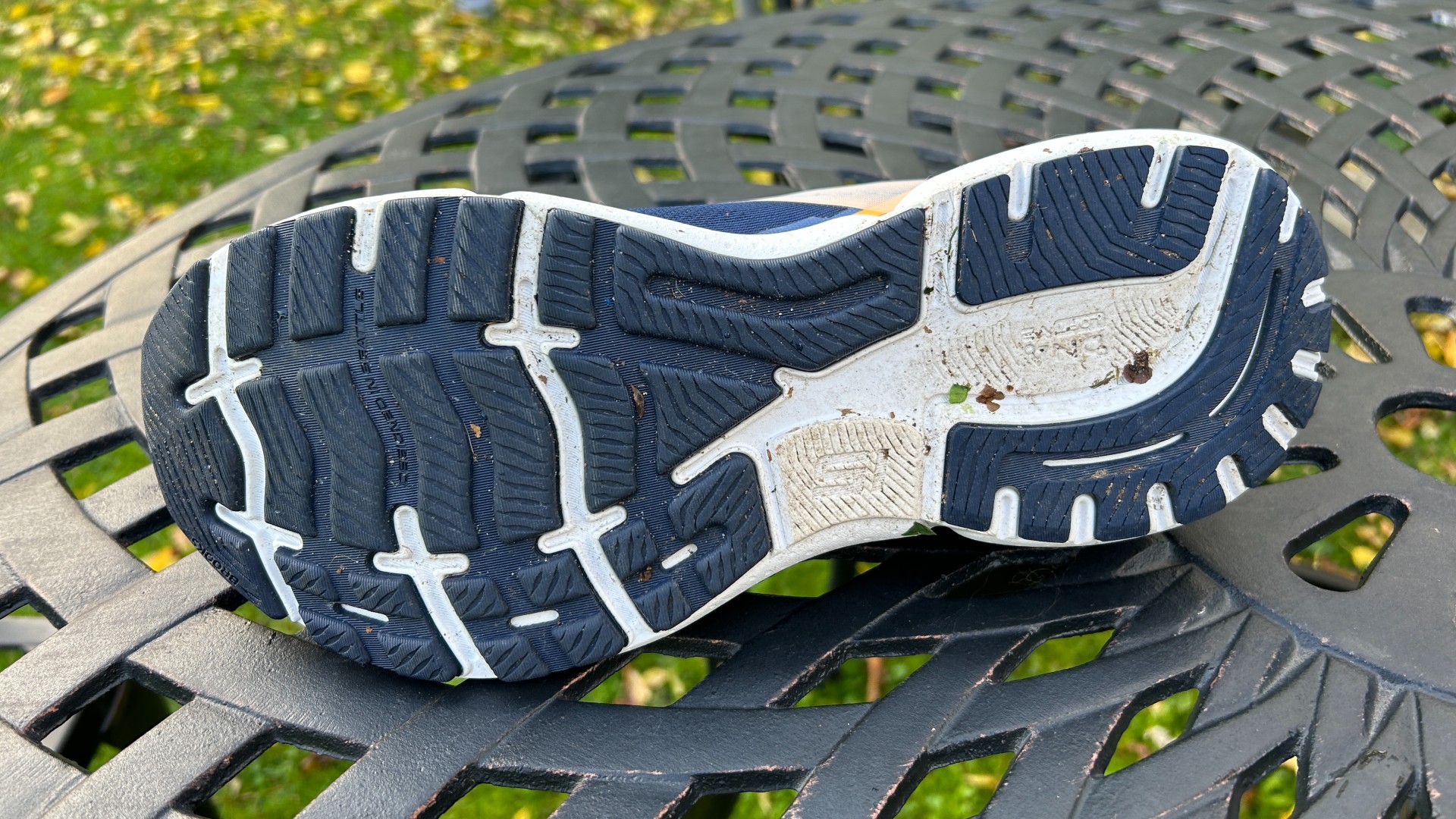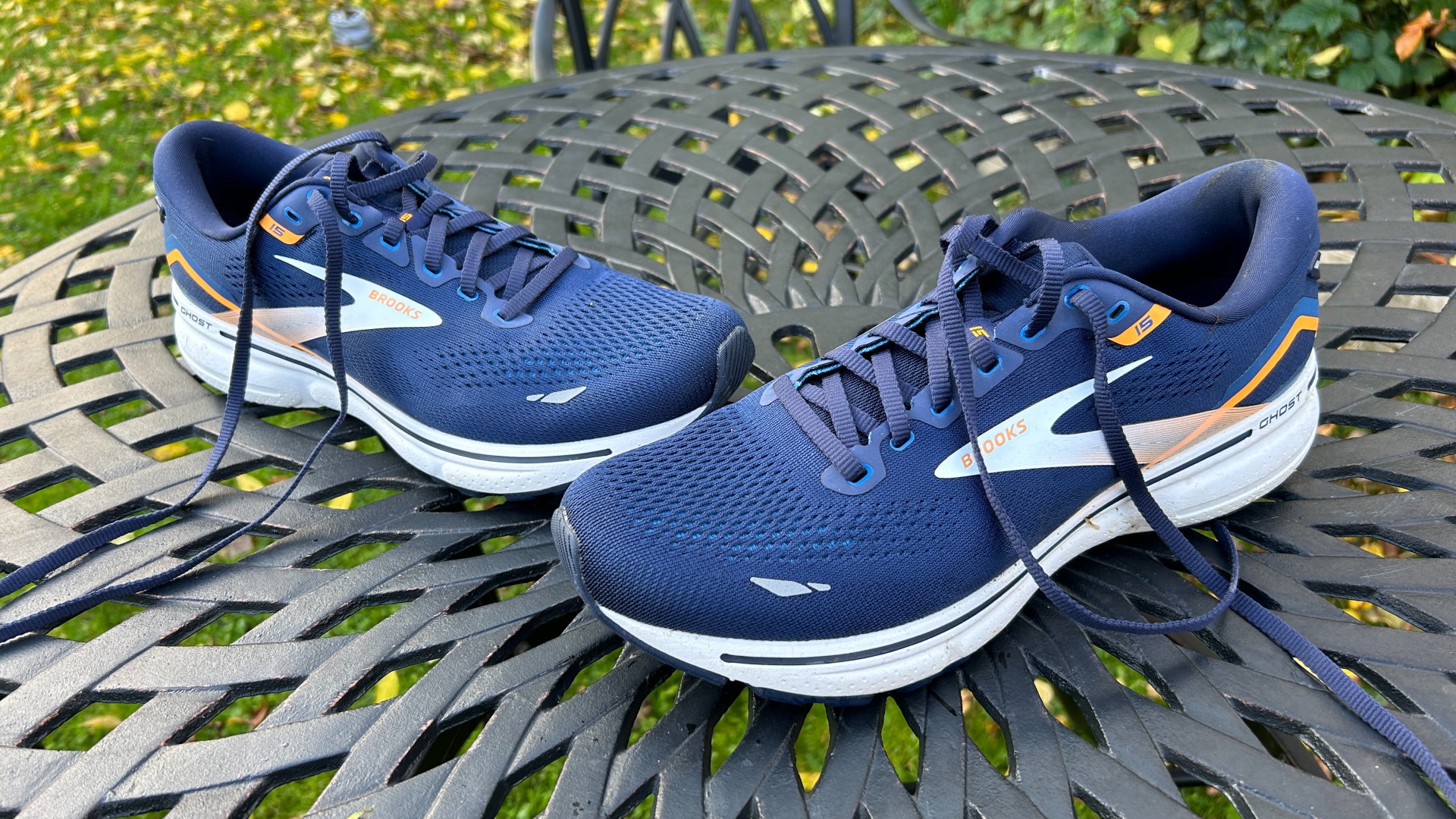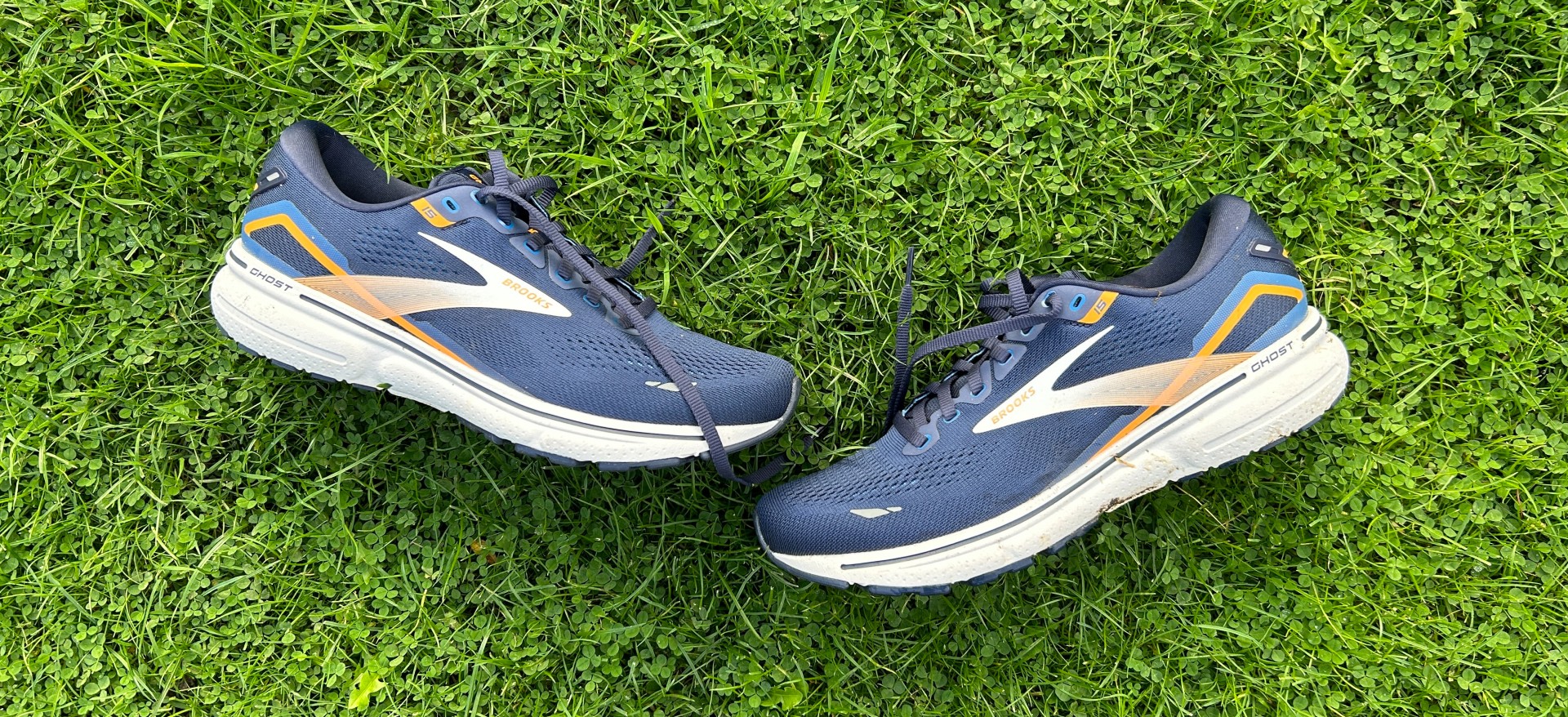Our Verdict
The Brooks Ghost 15 is a solid cushioned shoe that fans of the line will enjoy as much as its predecessor, but it lacks the innovations seen in other daily trainers and won’t win many new fans.
For
- Comfortable
- Durable
- Outsole grips well
Against
- Lacks versatility
- Heavier than competition
- Ride is dull
You can trust Coach
For 15 years the Brooks Ghost line has proved popular with runners of all levels. It’s not a flashy choice and it’s rarely one I’d add to my list of the best running shoes, but it’s a reliably comfortable and durable daily trainer.
As a result, it’s not a shoe that Brooks tends to make sweeping changes to. And despite a new midsole foam, that remains the case with the Ghost 15, which feels and looks very similar to past versions of the shoe.
Brooks Ghost 15: Price And Availability
The Brooks Ghost 15 went on sale in November 2022 through Brooks and third-party retailers, and it costs $140 in the US and £130 in the UK. That’s the same as the original RRP of the 14 .
That price puts it in the mid-range of Brooks running shoes, with prices ranging from $85 to $250 in the US for the Brooks Hyperion Elite 3, and £100 to £155 for the latest Brooks Glycerin in the UK.
Design And Fit

The main change Brooks has made with the Ghost 15 is that the midsole is now made from a softer and lighter version of the company’s DNA Loft v2 foam, which in turn is lighter, softer and less dense than the foam used on the Ghost 14.
To confuse matters, this is not the nitrogen-infused DNA Loft v3 foam used on the Brooks Glycerin 20, another very popular shoe line.
Otherwise the Ghost 15 sticks to the Ghost 14 blueprint. It has the same 12mm drop from heel to toe, which is higher than on most contemporary shoes, and the same thick rubber outsole with Brooks’s segmented crash pad, which is designed to smooth the transition through your footstrike.
The upper has been tweaked to provide a more secure fit, but feels similar to me, with ample cushioning around the heel and collar, and a solid-plastic heel counter to create more stability. The Brooks 15 comes in a wide range of sizes and widths, and fits me true to size.
I was hoping the Ghost 15 would be lighter, but at 10.4oz/297g in my UK 9 it’s a very similar weight to the Ghost 14, so any improvements in the ride would need to come from the updated midsole.
How I Tested This Shoe
I have run 52km in the Brooks Ghost 15, using it for a variety of training runs at easy and steady paces. I have also tested several past versions of the Ghost, along with the Brooks Glycerin 20.
Running Performance

I am a big fan of the Brooks Glycerin 20 and hoped that the new Ghost would also use DNA Loft v3 in its midsole, so was disappointed to see it had stuck with the DNA Loft v2. However, a softer, lighter version of DNA Loft v2 still appealed.
On my first couple of runs in the Ghost 15 it did seem a little softer than its predecessor, and also smoother in the transition from heel to toe. After extended testing, however, I felt that softness disappeared, and while it’s not uncomfortable at all, the shoe feels very similar to the Ghost 14.
It’s good for easy runs, as long as you appreciate the higher-than-average 12mm drop. The cushioning is not squishy or particularly bouncy, but it protected my legs well and the outsole is excellent, providing reliable grip on wet pavements covered in leaves.
I did not find the Ghost 15 versatile though. It was cumbersome when I tried to move beyond easy paces, even just to steady or tempo efforts, and the foam gives little back when you are running quickly.
It doesn’t feel like much has changed in the shoe at all, and while long-term fans of the Ghost line will be pleased about that, it means the shoe has fallen further behind in a market full of innovative daily trainers that use livelier, lighter foams (such as the nitrogen-infused DNA Loft v3), or even insert a plate into the midsole to create a more propulsive ride.
Is The Brooks Ghost 15 Worth It?
The Ghost 15 will do the job as a durable shoe that you can use to rack up easy miles, and it’s a good pick for newer runners who value protection from the impact of pavement-pounding. But even in this area there are several shoes I rate more highly, and there are many better daily trainers that are more versatile.
If you’re looking for a cushioned, protective shoe then the Brooks Glycerin 20 and Saucony Triumph 20 both have more enjoyable rides than the Ghost 15 while protecting the legs just as well. For cushioned daily trainers, the Puma Velocity Nitro 2, Nike Pegasus 39 and Reebok Floatride Energy 4 are all cheaper than the Brooks Ghost 15 and outperform it for any kind of run.
The Ghost 15 will probably remain one of the most popular shoes available by virtue of its high level of step-in comfort and deserved reputation for reliability, and if you’re an existing fan of the line the new shoe will suit you well. For me, however, there are simply better options out there that make use of the advances in midsole materials in particular to create more enjoyable and versatile shoes.
Brooks Ghost 15 vs Brooks Ghost 14
On paper the Brooks Ghost 15 seems a substantial update on the Brooks Ghost 14, the brand having changed the midsole material to a new version of its DNA Loft v2. Brooks says the foam on the Ghost 15 is lighter, softer and less dense than the one used on the Ghost 14, all of which sounds great. However, in practice I didn’t really feel much difference in the ride, and the Ghost 15 weighs a very similar amount to the Ghost 14 and has the same 12mm drop.
It’s the same story with the changes made to the upper of the shoe, which has been tweaked to improve the fit. Once again I didn’t really notice this change, and both the Ghost 14 and Ghost 15 fit me well in my normal running shoe size.
Overall the two shoes performed the same role equally well for me during my testing, and both will work fine as a workhorse daily trainer with a higher drop than most shoes on the market. I’d look to snag a deal on the older Ghost 14 if you can, since it’s more likely to be in sales than the newer shoe and is equally good.
This review was first published in December 2022

Nick Harris-Fry is a journalist who has been covering health and fitness since 2015. Nick is an avid runner, covering 70-110km a week, which gives him ample opportunity to test a wide range of running shoes and running gear. He is also the chief tester for fitness trackers and running watches, treadmills and exercise bikes, and workout headphones.

